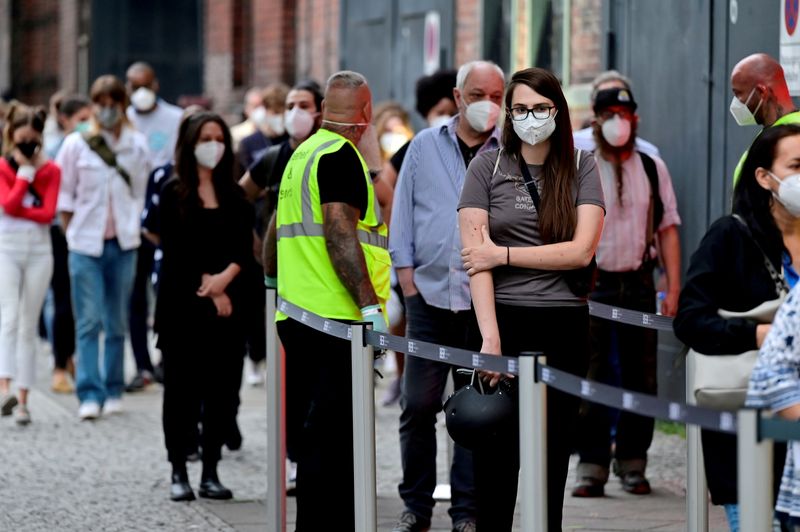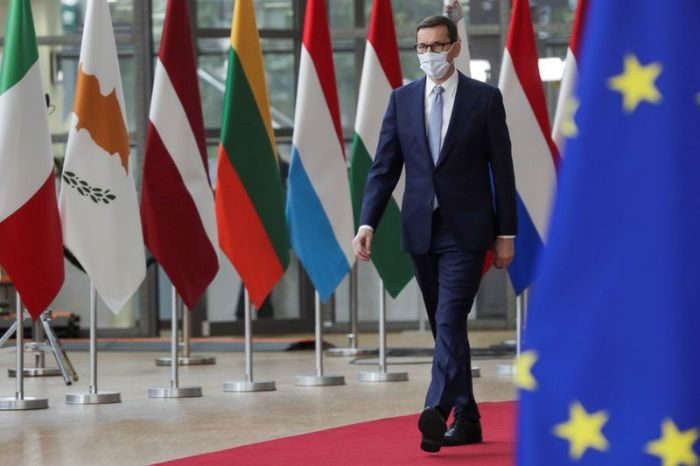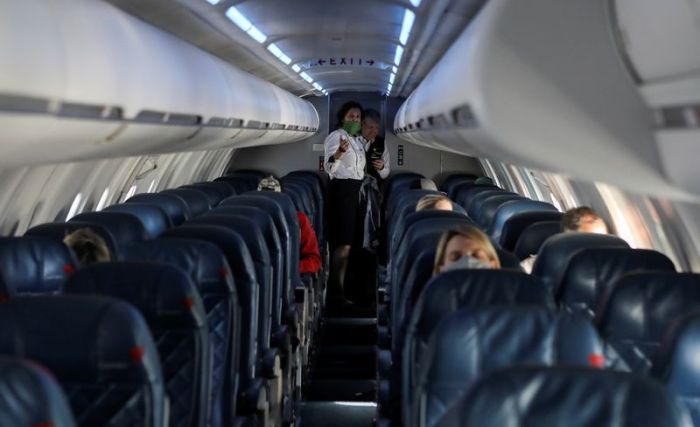BERLIN (Reuters) -A key measure of coronavirus infections in Germany rose sharply over the past week, figures showed on Friday, raising the prospect of tougher restrictions as winter approaches.
The seven-day incidence rate of cases – which has been used to decide COVID-19 curbs – jumped more than 26 points in a week, the Robert Koch Institute responsible for disease control said.
The rise comes as the leaders of Germany’s 16 states jointly called on the federal government to give them a legal basis to work on measures against the pandemic, as a nationwide state of emergency is set to lapse on Nov. 25.
The restrictions will automatically expire then unless extended by parliamentary vote.
“We need a mechanism, a rule, a reliable legal basis to make basic measures possible,” said Armin Laschet, premier of North Rhine-Westphalia, Germany’s most populous state.
The number of new infections per 100,000 people over seven days stood at 95.1 compared with 68.7 reported a week ago, the institute said. A total of 19,572 new infections were reported on Friday, 8,054 more than the same time last Friday, it added.
More than 1,500 COVID-19 patients are in intensive care, up from about 1,400 a week ago, figures from the DIVI association for intensive and emergency medicine showed on Thursday.
“The fourth wave has started now and is still gaining speed,” Christian Karagiannidis, the scientific head of DIVI, said on Twitter on Thursday.
With the rising number of cases, Germany’s state premiers are unlikely to lift rules requiring social distancing, mask-wearing and proof of vaccination, recovery or a negative test result to enter most indoor public spaces.
The prospect of another lockdown is highly unpopular. Federal Health Minister Jens Spahn promised in August that anyone who was vaccinated would not be subjected to such measures come autumn.
Around 66% of German residents are fully vaccinated, compared with 63.3% of people across the European Union. Only about 1.5 million Germans have received a booster shot of COVID-19 vaccine, compared with around 55 million who have had two shots.
(Reporting by Miranda Murray; Editing by Andrew Heavens and Mark Heinrich)

























